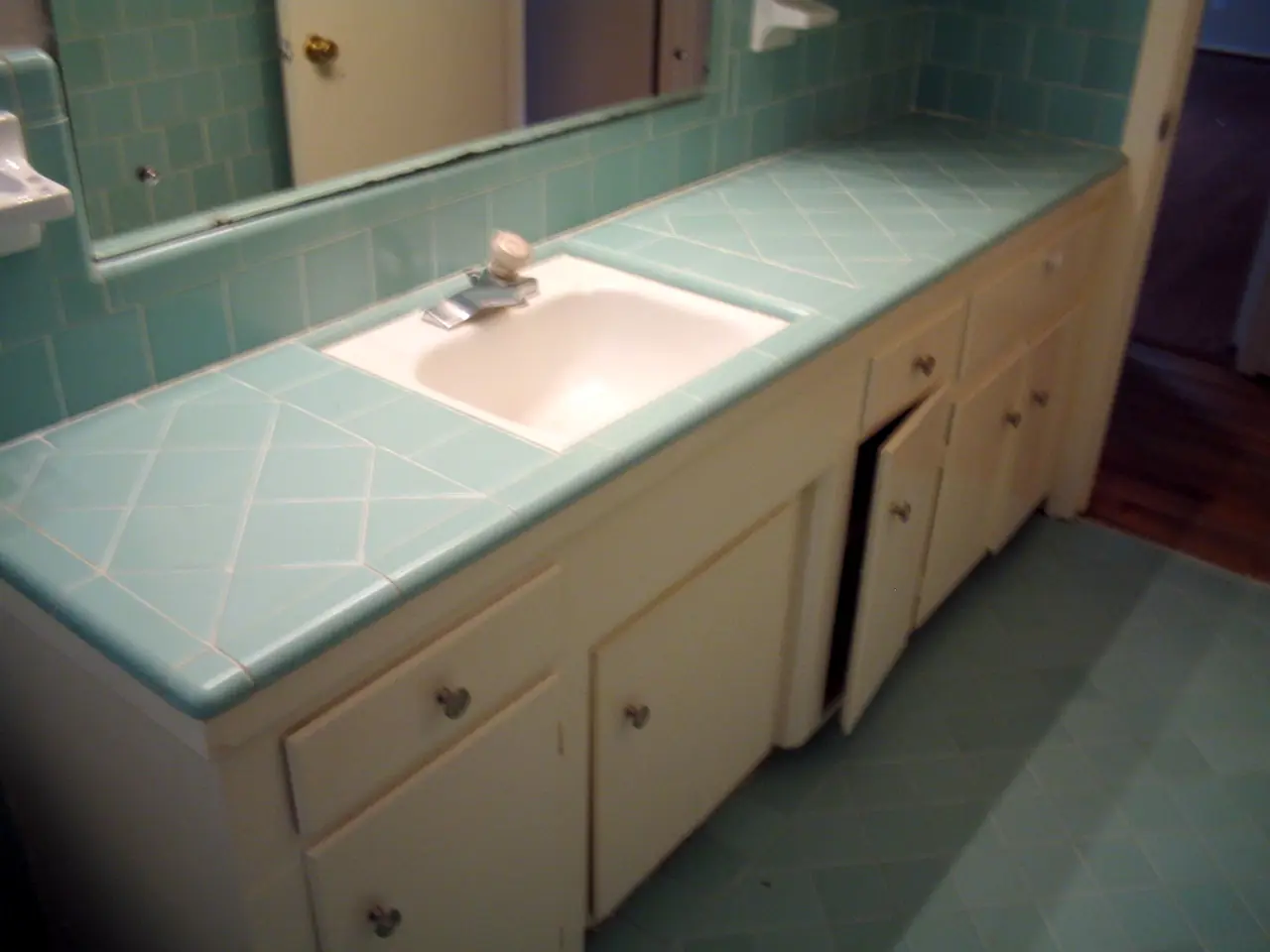Kitchen island sink: Debating its merits? Design specialists unveil the benefits and drawbacks of this sink placement in your kitchen
A kitchen island sink offers a unique blend of functionality and design, providing increased counter space, improved social interaction, and a more efficient work triangle. However, this choice comes with its own set of advantages and challenges compared to traditional wall-mounted sinks.
Pros of an Island Sink
One of the key benefits of an island sink is the enhanced countertop space on the main counters since the sink moves to the island. This central location allows the cook to face guests or family, improving social interaction during food preparation.
The sink's central positioning also creates an efficient workflow by centralizing sink, stove, and fridge areas, making it a multi-use prep and cleanup zone. The flexibility of an island sink design can be particularly beneficial in open layouts or renovations.
Cons of an Island Sink
Despite its advantages, an island sink installation comes with higher costs and complexities. The need for plumbing lines routed to the island area, plus potential venting issues that need professional planning to avoid odors, contribute to these increased costs. Maintenance can also be more involved, as island sinks may lack easy access to plumbing compared with sinks against walls.
Additional daily cleaning is important to prevent odors, as food debris accumulation in island sinks may be more likely. It's crucial to ensure that the kitchen space is large enough to avoid disrupting workflow or traffic patterns.
Traditional Sink Placements
By contrast, traditional sink locations against a wall are typically easier and less expensive to install and maintain. Existing venting can be utilized efficiently, and the sink's location against a wall provides easy access to plumbing. However, they may limit counter space and reduce interaction with others while working at the sink.
Making the Right Choice
Choosing between an island sink or traditional placement depends on kitchen size, layout, budget, cooking habits, and lifestyle priorities. Aesthetics, social interaction, and practical maintenance considerations all play a role in this decision.
For instance, a Belfast sink offers a traditional charm and a deep bowl for washing pots and pans. A smaller bar sink on an island can be paired with a boiling water tap for easy serving of drinks. Sink covers or worktop boards that fit over the sink can hide it completely when not in use, extending countertop space.
When it comes to the sink and tap, opting for a stylish and practical design can complement the overall look of the kitchen. Downdraft extraction hobs are popular for open-plan kitchens for a streamlined and efficient appearance.
However, it's important to note that placing the sink incorrectly in the kitchen can be a costly mistake. Countertop sinks are generally not suitable for kitchen islands. Depending on the kitchen worktop material, it may increase costs to get sink and tap cut-outs and drainage grooves.
In conclusion, the decision between an island sink and a traditional sink placement is a balance of functionality, aesthetics, and budget. It's essential to consider all factors carefully to ensure the chosen sink fits seamlessly into your kitchen design and lifestyle.
Sources: [1], [4], [5]
- The unique positioning of an island sink offers increased counter space on the main counters due to its relocation from the standard wall-mounted location.
- The central location of an island sink improves social interaction by allowing the cook to face guests or family during food preparation.
- In open layouts or renovations, the flexibility of an island sink design can be particularly advantageous.
- The higher costs and complexities associated with installing an island sink are due to factors such as routing plumbing lines to the island area and potential venting issues.
- Maintaining an island sink may require more attention to cleanliness to prevent odors arising from food debris.
- Traditional sink placements against a wall are generally easier and less expensive to install and maintain compared to island sinks.
- When deciding between an island sink or traditional sink placement, it's crucial to consider factors such as kitchen size, layout, budget, cooking habits, and lifestyle priorities.
- Aesthetics, practical maintenance considerations, and design preferences all play a role in the decision-making process regarding sink placement in a home or kitchen project, while adhering to one's budget and considering the impact on the overall design and flow of the room.




